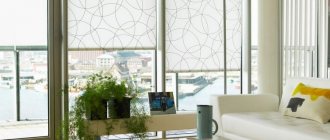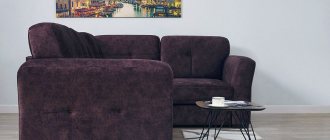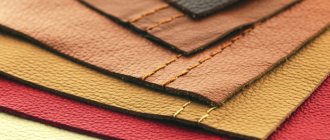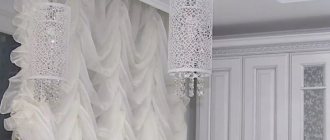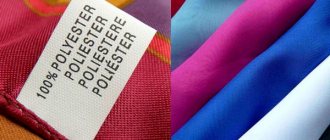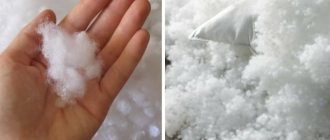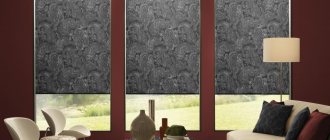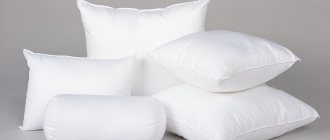Curtains play an important role in interior design. They not only protect the house from prying eyes and sunlight, but also create comfort and give the room a unique style. The most common type of window decoration is translucent curtains. If not everyone likes thick curtains, then airy fabric becomes an outfit for almost any Russian window. There are several options for fabrics for the role of tulle. Let's try to figure out what is better - organza or veil.
Features of microvoile fabric
Microveil is a type of tulle. The fabric is a light, almost weightless, translucent material thinner than silk. It has a light matte shine. At first glance, a microveil can be confused with a veil. But in fact, it combines the properties of both a veil and organza. The fabric took on softness and airiness from the veil, and elasticity and light transmission from organza.
Typically, this fabric is used to make window curtains, bed curtains, or used for room decoration.
The difference between microvoile fabric and veil, organza and semi-organza
The main difference between these fabrics is their structure. All fabrics are light, soft, airy, translucent or transparent. The veil fabric has a mesh structure. It is softer and denser than microveil or organza. It is less transparent and can be used to darken a room. Still, the main use of the veil remains sewing wedding dresses and photographs. Organza, in turn, is a completely transparent fabric with a slight sheen. Curtains made of this fabric are transparent and completely transmit sunlight. We can say that a microveil is something between organza and a veil; it combines their softness and light shine.
Semi-organza, in turn, differs from microveil in the type of shine. In the microveil it is a dotted metallic one, while in the semi-organza it is a muted mother-of-pearl. Which of the above fabrics is better? It is impossible to judge, because often their functions may differ. What to do when you need to decide on the choice of material? An important argument in this case is the price. The micro veil wins here.
Veil
Voile is a soft, light, almost weightless fabric. It is usually made of cotton or polyester. It is less commonly woven from silk fibers; such varieties are the most expensive.
Advantages of the veil:
- softness;
- moderate transparency;
- airiness;
- ease of drapery;
- large assortment of colors.
Voile curtains are ideal for romantic-style interiors. Flowing draperies, lambrequins, delicate folds and airy flounces will highlight the delicate taste of the owner of the house. The veil allows you to experiment with several shades and colors on one curtain.
The material blocks out the sun's rays well. Therefore, curtains made from it should be hung on windows that face the sunny side - such a curtain will help muffle the bright rays.
Delicate and soft fabric also has its disadvantages
- Stains. They are difficult to wash off from a veil and are clearly visible in the light. Therefore, it is better not to make tulle from it in the kitchen, dining room or nursery.
- Low strength. The fabric is prone to damage and tears easily.
- Wrinkles a lot. When stored folded for a long time, creases form on the material, which are then difficult to smooth out. Therefore, when removing the fabric, roll it up.
- Requirement for care. The material needs delicate hand washing. Spinning is contraindicated. Ironing the veil is allowed only through a damp cloth.
History of the origin of microvoile fabric
Microvoile fabric entered the textile market quite recently, in the middle of the last century, along with the ability to produce very thin synthetic threads. Fabric is considered a new, improved material. Now the largest production of this fabric is allocated to China, South Korea, Russia, Turkey and Italy. And the most popular brands are two Turkish fabrics “Interio” and “Adele”.
About the types
It should be noted that curtains come in different types. So, classic curtains are a thin curtain and drapes made of dense and heavy fabric. Austrian curtains are fabric gathered with a cord into smooth horizontal folds. Romanesque curtains have a similar appearance to Austrian ones, but they are only folded using mounting tape. As a result, you get semicircular folds at the top, and drapery at the bottom.
London ones are cascading ones, where the tape holds the fabric in a raised position. As a result, the curtain becomes similar to a garland. But crossed curtains are made from two sheets of fabric, which are connected at the top, and at the bottom the sheets are pulled apart in different directions. Italian curtains are distinguished by the fact that they do not move completely apart. They are tightened with cords that are pulled to the ends of the cornice.
There are also Japanese curtains. They are made from smooth rectangles of fabric, which are complemented with rigid inserts at the bottom. Roman blinds are also flat sheets of fabric that, when folded, form horizontal folds. How are roller blinds similar to them, only the latter, when raised, are rolled into a neat roll of fabric.
Chinese curtains are usually made to fit the window and are decorated with a contrasting ribbon along the edge. The last type is bamboo curtains. They look like bamboo fabric, which is intertwined with natural threads. When raising the curtain, you just need to pull the cord and the fabric will curl into a roller.
How to care for microvoile fabric
Microveil is quite easy to care for. Due to its structure, the fabric does not accumulate dust and there is no need for frequent washing. Products made from micro-veil can be washed in a washing machine on a delicate cycle at a temperature not exceeding 30 degrees. Choose washing powders and gels that do not contain chlorine. The washing machine drum can damage the fabric, so choose the minimum speed setting. Products made from this fabric dry quite quickly. During drying, carefully hang the product on a drying rack or line. The microveil fabric does not wrinkle, but if necessary, you can smooth the material with an iron in the “synthetic” mode.
So, as we can see, caring for microveil fabric is not at all difficult. If you follow the above rules, products made from this material will serve you for a long time.
Which tulle is better: veil, organza or mesh?
There is no clear answer to the question of which is better, organza or veil. When choosing a material, you should be guided by taste, the purpose of the room, and material capabilities.
Several recommendations can be highlighted.
- A veil is more suitable for romantic interiors.
- Organza is ideal for kitchens, dining rooms, living rooms, and other places where contamination is possible.
- In rooms where tulle can be easily damaged, it is better to use organza.
- For well-lit rooms, a veil is more suitable. It blocks the sun's rays well. If there is not enough light in the room, choose organza. A veil will make the room too dark.
The easiest way to find organza is made from polyester or viscose. Fabric made from natural fibers is very expensive and cannot be found on the open market. This material is considered collectible.
Of course, the most important selection criterion is the color and decor of the fabric. Both options have a wide range of colors. Choose the material that most fully reflects your idea of ideal curtains.
Material
Tulle veil can be made from natural fibers or be completely synthetic. Basic materials for its manufacture:
- Silk is a natural material made from the thread of the silkworm pupa. It is characterized by unsurpassed softness and smoothness. But the price of this material is quite high.
- Cotton . This type of fabric is a little cheaper than the previous one, but also looks great.
- Synthetics . Artificial veil is also good, although much cheaper than its natural counterparts. It is easier to care for. The tulle veil does not shrink during washing, wrinkles less during use, and practically does not fade. Also, artificial fabric is easier to iron. The light transmission properties of this material are slightly higher than those of silk and cotton.
Color and texture
The white voile curtain is a classic in window decoration. But modern industry offers plain fabric in completely different shades. In addition, it can have different patterns. There is a veil for making tulle with velvet coating, photo printing, embroidery, guipure inserts, and a printed pattern.
Now the industry is producing a new type of tulle fabric called microvoile. This material has all the properties of a regular veil, but unlike standard fabric, it has the light transmittance of organza and its elasticity. This fabric can also be made from both synthetic and natural fibers.
Using a pattern on a tulle veil, you can change the geometry of the room. So, for example, if your room has low ceilings, then use a veil with vertical stripes, while horizontal stripes will stretch the room lengthwise.
Using bright prints on the voile, you can draw attention to the window, making it the accent of the interior. But you should not use a bright tulle veil with eye-catching curtains. This will make the window look tacky and can ruin the entire interior.
Ironing
Before ironing the veil, you need to learn about its features and properties. The melting point of the veil is 110 degrees, plus or minus 10 degrees, depending on the composition of the material. The presence of patterns on the fabric indicates that some other material could have been used for them, so you first need to apply gauze and only then iron it. This is done quickly; you cannot hold the iron in one place. Movements should be as careful as possible. It is forbidden to use a steam generator to avoid harm to the fabric.
Now you know whether you can iron a veil, but it is important to remember that this is a delicate process, but requires high speed.
The iron takes a very long time to cool down, so it needs to be placed on its side. Any ironing will be successful if done carefully. The veil can only be ironed after washing, as it usually does not wrinkle on its own. The norm for ironing a veil is 3-4 times a year, no more, otherwise you can deprive it of its attractive appearance.
Options in the interior
- This season, special emphasis should be placed on the drapery of window curtains: if the canvas is solid and without tiebacks, then there will definitely be a lot of folds. For draping 6-7-meter organza tulle, it is not recommended to collect the top tape to the size of the window opening. In this case, only the upper part will be draped, and the lower part will form a “stake”. It is better to distribute such tulle on a large number of hooks and drape it manually.
- A great way to decorate a window is with tulle tiebacks. This season you can pick up not only night curtains, but also the tulle itself in several places. To do this, several strips of fabric are hung on the window, possibly in different colors, and each of them is intercepted by a holder in the form of a butterfly or a tree.
Functions of curtain weights
The use of fittings to improve the appearance of curtains is also dictated by the lightness of the fabrics. A veil with a weighting agent, what is it, the average person who is not faced with the purchase of fabrics for decoration will ask.
Types of weighting agents are distinguished according to their functional purpose:
On a note! Different types of additional weight for tulle are used depending on the type of fabric and the desired result.
There is a big difference between a weighted and an unweighted veil. A sewn cord into the curtain edging significantly improves the aesthetic perception of the tulle.
Doesn't need weighting
Fastening methods
There are several ways to hang a tulle veil on a window:
- The most common type of fastening here is to sew curtain tape along the edge of the fabric. It allows you to drape the curtain up in different ways and create neat frames.
- The veil is also often attached using loops. To do this, curtain tape is also sewn on, to which loops are subsequently attached. They can be made from the fabric of the tulle itself, or from other materials, for example, satin ribbon.
- If there is no need to move the tulle along the cornice, then a drawstring is often made at the top of the curtain. A barbell is passed through it. This fastening is decorated with ruffles, and a guipure ribbon can also be sewn along the top.
- Rarely, but still used for hanging tulle veils, eyelets. To do this, the edge of the curtain is reinforced with curtain tape, then the eyelets are attached.
